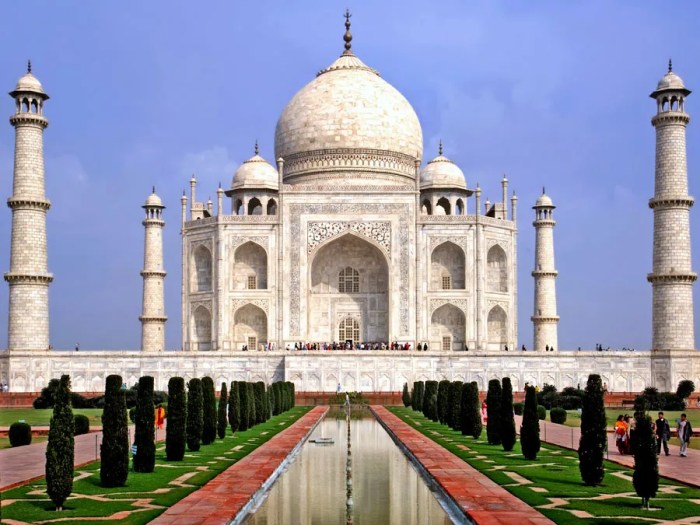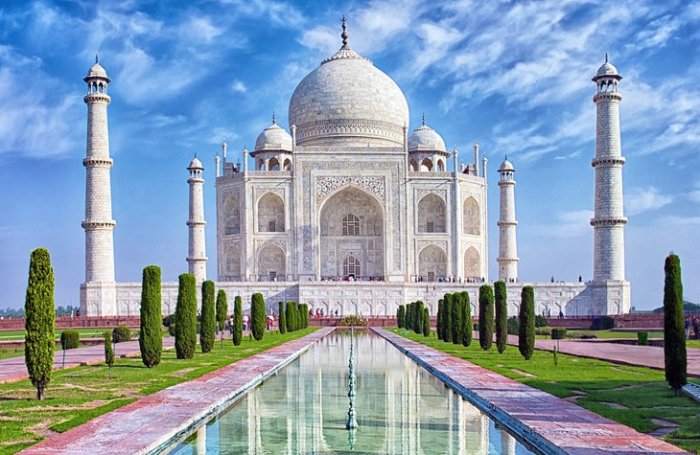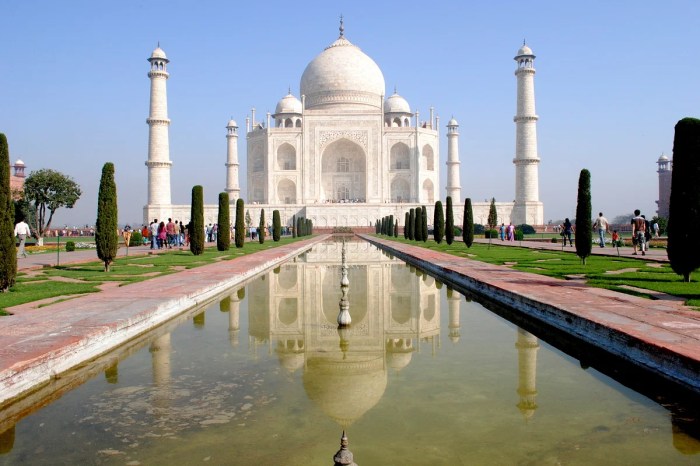Exploring the taj mahal definition ap world history, this introduction immerses readers in a unique and compelling narrative, with an authoritative tone that is both engaging and thought-provoking from the very first sentence. The Taj Mahal stands as a testament to the enduring power of love and devotion, embodying the pinnacle of Mughal architectural achievement and captivating the hearts and minds of visitors for centuries.
This magnificent mausoleum, commissioned by Emperor Shah Jahan in memory of his beloved wife Mumtaz Mahal, is not merely a building but a symphony of architectural elements, cultural influences, and historical significance. Delving into its rich history, intricate design, and enduring legacy, we uncover the captivating story behind the Taj Mahal, a timeless masterpiece that continues to inspire awe and wonder.
Definition and Background: Taj Mahal Definition Ap World History

The Taj Mahal is a white marble mausoleum located in the city of Agra, India. It was built by the Mughal emperor Shah Jahan in memory of his wife, Mumtaz Mahal. The Taj Mahal is widely considered to be one of the most beautiful buildings in the world and is a UNESCO World Heritage Site.
The Taj Mahal was built over a period of 22 years, from 1632 to 1653. It is estimated to have cost over 32 million rupees (equivalent to over $1 billion today). The Taj Mahal is made of white marble and is inlaid with precious stones.
The building is set in a garden with four minarets and a large pool.
Historical Context
The Taj Mahal was built during the reign of the Mughal Empire. The Mughal Empire was a Muslim empire that ruled over most of the Indian subcontinent from the 16th to the 19th centuries. The Mughal Empire was a period of great cultural and artistic achievement.
The Taj Mahal is one of the most famous examples of Mughal architecture.
Emperor Shah Jahan was the fifth Mughal emperor. He was a great patron of the arts and architecture. The Taj Mahal was built as a symbol of his love for his wife, Mumtaz Mahal. Mumtaz Mahal died in childbirth in 1631. Shah Jahan was so grief-stricken that he vowed to build the most beautiful mausoleum in the world in her memory.
Architectural Features, Taj mahal definition ap world history
The Taj Mahal is a masterpiece of Islamic architecture. It is made of white marble and is inlaid with precious stones. The building is set in a garden with four minarets and a large pool.
The Taj Mahal is symmetrical in design. The main entrance is on the south side of the building. The building is divided into two main chambers. The first chamber is the prayer chamber. The second chamber is the burial chamber.
The burial chamber contains the tombs of Shah Jahan and Mumtaz Mahal.
Cultural Impact
The Taj Mahal has had a profound impact on Islamic architecture and design. The building has been copied and imitated by architects around the world. The Taj Mahal is also a symbol of love and devotion. It is a popular destination for tourists from all over the world.
The Taj Mahal has also played a role in promoting tourism and cultural exchange. The building has helped to put India on the map as a tourist destination. The Taj Mahal has also helped to promote understanding between different cultures.
Preservation and Conservation
The Taj Mahal is a UNESCO World Heritage Site. The building is protected by the Archaeological Survey of India. The Taj Mahal is also protected by a number of international treaties.
The Taj Mahal is facing a number of challenges, including pollution and environmental factors. The pollution in the air is causing the marble to yellow. The water in the pool is also becoming polluted. The Archaeological Survey of India is working to protect the Taj Mahal from these threats.
FAQ Guide
What is the significance of the Taj Mahal in world history?
The Taj Mahal is recognized as one of the most iconic and architecturally significant structures in the world. Its construction marked a turning point in Mughal architecture, blending elements from Persian, Indian, and Islamic traditions. The Taj Mahal’s grandeur and beauty have captivated visitors for centuries, earning it a place among the New7Wonders of the World and a UNESCO World Heritage Site.
Who commissioned the construction of the Taj Mahal?
Emperor Shah Jahan commissioned the construction of the Taj Mahal in memory of his beloved wife, Mumtaz Mahal. The construction began in 1632 and took approximately 22 years to complete, employing thousands of skilled artisans and craftsmen.
What architectural features make the Taj Mahal unique?
The Taj Mahal is renowned for its exquisite architectural features, including its symmetrical design, white marble exterior, and intricate pietra dura inlay work. The mausoleum is set within a vast garden complex, featuring fountains, pools, and lush greenery, creating a harmonious blend of architectural beauty and natural splendor.

